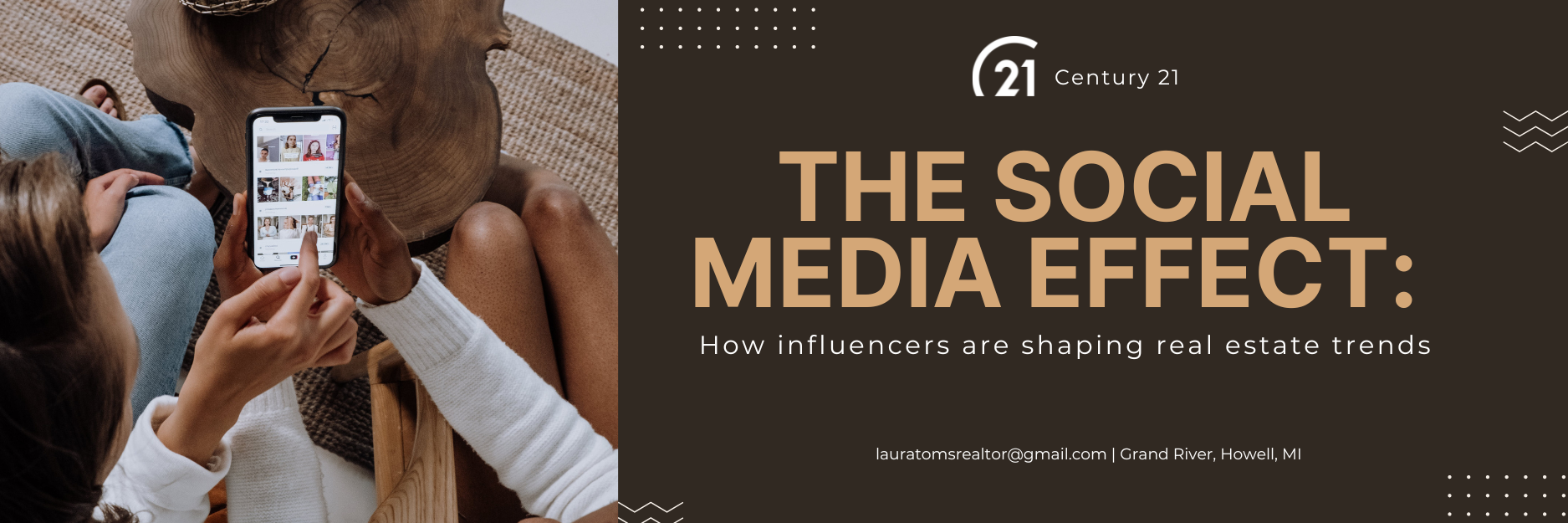In the age of social media dominance, influencers have become trendsetters across various industries, and real estate is no exception. From dreamy destination homes to meticulously curated interior spaces, influencers are leaving an indelible mark on the way we perceive, desire, and invest in real estate. In this blog, we’ll delve into the fascinating realm of how social media influencers are shaping real estate trends, from aspirational properties to evolving interior design preferences.
Destination Dreaming: The Rise of Instagrammable Homes:
Social media influencers, particularly on platforms like Instagram, have transformed the real estate landscape by showcasing picturesque and aspirational properties. The allure of destination homes, characterized by stunning architecture and breathtaking views, has led to increased interest and demand for unique, photogenic residences. From cozy cabins nestled in the mountains to luxurious beachfront villas, influencers are turning these homes into must-have lifestyle statements.
Influencer-Driven Neighborhood Hype:
Beyond individual properties, influencers are also shaping real estate trends at the neighborhood level. The endorsement of specific neighborhoods or communities by influencers can significantly impact their desirability. The cool cafes, trendy boutiques, and vibrant street art featured in influencers’ content can turn a neighborhood into a sought-after locale, influencing the decision-making process for potential homebuyers.
Interior Design Inspirations:
Social media influencers often share glimpses of their impeccably designed living spaces, sparking trends in interior design. From minimalist aesthetics to bold color palettes, followers look to influencers for inspiration when decorating their own homes. This phenomenon has created a demand for homes that serve as a blank canvas for personalization and self-expression.
The Rise of Home Improvement and DIY Culture:
Influencers in the home and lifestyle niche have fueled a surge in home improvement and do-it-yourself (DIY) culture. From small decor projects to full-scale renovations, influencers share their design journeys, encouraging followers to take on their own projects. This shift has led to increased interest in homes with renovation potential and unique features that can be showcased on social media platforms.
Real Estate Marketing and Collaboration:
Real estate professionals are recognizing the power of influencer marketing in promoting properties. Collaborations between influencers and real estate agents or developers are becoming more common, as influencers can provide a unique and authentic perspective that resonates with their engaged audiences.
Virtual Tours and 360-Degree Experiences:
Influencers are utilizing technology to provide immersive experiences of properties through virtual tours and 360-degree videos. This not only enhances the viewing experience for potential buyers but also expands the reach of properties to a global audience, driven by the influencers’ social media following.
Challenges and Considerations:
Authenticity and transparency are paramount when considering the insights provided by influencers on real estate trends. Followers must distinguish between genuine recommendations and promotional content, especially when it comes to significant financial decisions like buying a property. Moreover, striking a balance between aspirational content and realistic expectations is key. Influencers may showcase luxurious lifestyles, but individuals must assess their own financial situations, ensuring that their real estate decisions align with practical needs and goals. It’s the delicate art of navigating between inspiration and financial prudence in the ever-evolving world of real estate influenced by social media.
The social media effect on real estate trends is undeniable, with influencers playing a pivotal role in shaping preferences and driving market dynamics. As the online world continues to evolve, the real estate industry must navigate the dynamic landscape of influencer culture, recognizing both its potential benefits and the importance of maintaining authenticity in a rapidly changing market.


 Facebook
Facebook
 X
X
 Pinterest
Pinterest
 Copy Link
Copy Link


